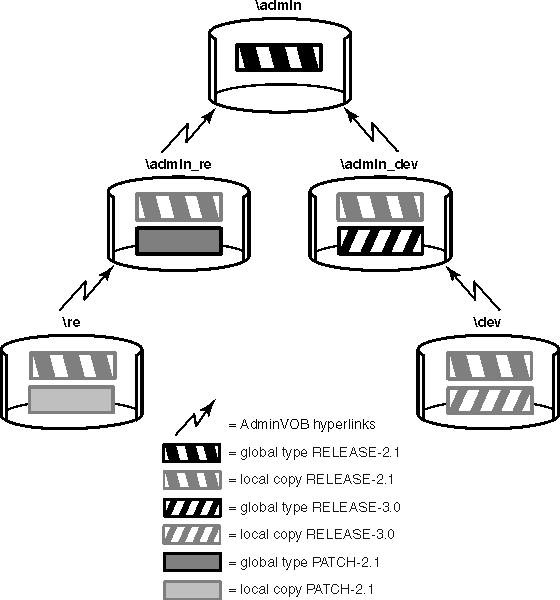Administrative VOB hierarchies and global types
Managing type objects that are used in a group of related VOBs is greatly simplified by creating administrative VOB hierarchies that can share globally defined type objects.
After a global type object is created in a VOB, instances of the type can be created in any other VOB that links to it with an AdminVOB hyperlink. This section introduces global types and administrative VOB hierarchies.
Administrative VOB hierarchies
- It contains at least one global type.
- It is the target of an AdminVOB hyperlink from another VOB.
An administrative VOB hierarchy includes at least one administrative VOB and one or more VOBs that have an AdminVOB hyperlink to it or to another VOB that has an AdminVOB hyperlink to it.
Every VOB in an administrative VOB hierarchy has exactly one parent and zero or more children. Administrative VOB hierarchies can have any structure that does not violate these constraints or create a circular relationship. In the example shown in the following figure, the administrative VOB \admin defines global types used by all VOBs in the hierarchy, while lower-level administrative VOBs \admin_dev and \admin_re define additional global types specific to the needs of particular teams.
